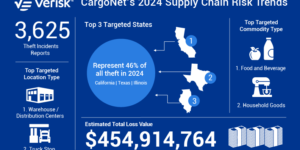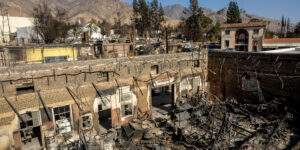Donald Trump and the Trump Organization used false and misleading statements of financial condition to obtain favorable real estate loans and insurance coverage over the last decade, according to a 222-page civil complaint filed by New York Attorney General Letitia James after a three-year investigation.
The suit names the Trump Organization, Donald Trump, three of his children—Executive Vice Presidents Ivanka Trump, Eric Trump and Donald Trump Jr.—as well as Chief Financial Officer Allen H. Weisselberg, and other Trump entities and individuals.
While the bulk of the fraud charges concern bank loans, the suit also charges the Trumps with insurance fraud under state laws that prohibit the submission of false information as part of an application for commercial insurance or to claim a benefit under an insurance policy.
James alleges that each defendant participated in a “continuous, integrated scheme” to use false and misleading information to inflate Donald Trump’s net worth in order to obtain financial benefits of about $250 million.
The suit alleges that the former president, with the help of his children and senior executives at the Trump Organization, “falsely inflated his net worth by billions of dollars to induce banks to lend money to the Trump Organization on more favorable terms than would otherwise have been available to the company, to satisfy continuing loan covenants, to induce insurers to provide insurance coverage for higher limits and at lower premiums, and to gain tax benefits, among other things.”
From 2011-2021, Trump and the Trump Organization “knowingly and intentionally created more than 200 false and misleading valuations of assets on Trump’s annual statements of financial condition to defraud financial institutions,” the lawsuit claims.
The suit was filed in the state trial court for New York County.
As penalty for the alleged misconduct, the attorney general is seeking to: permanently bar the Trumps from serving as officers or directors in any New York corporation; bar Trump and the Trump Organization from entering into any New York real estate acquisitions for five years; award disgorgement of all financial benefits obtained through the persistent fraudulent practices, estimated to total $250 million.
In conjunction with the lawsuit, James said she also has referred the matter to the U.S. Attorney’s Office for the Southern District of New York and the Internal Revenue Service for criminal investigation.
Trump’s lawyer, Alina Habba, told the New York Times the charges are “meritless.”
The former President took to his Truth Social site to respond, calling the New York Attorney General a “racist” for going after him and his family and labeling the lawsuit a “witch hunt.” His sons, Donald Jr. and Eric, also blasted the suit as a “witch hunt.”
Insurance Charges
The suit provides details on two insurance scenarios where Aon Risk Solutions was the broker and the Trumps are alleged to have submitted false information: a surety bond program with Zurich North America, and directors and officers liability coverages from Everest National and Tokio Marine HCC.
The Trump financial documents were key components in its insurance submissions. They were used to support Trump’s personal guaranty in lieu of collateral and to misrepresent the valuations of Trump properties, according to the complaint, which notes that the Trump Organization only allowed underwriters to review Trump’s financial statements in person at Trump Organization offices.
Regarding the D&O coverage, the suit also claims that in addition to submitting false financial statements, Trump and his organization failed to disclose an investigation into Trump and other employees that could have affected their ability to obtain the coverage. The Trump firm later attempted to seek defense coverage under the D&O policy for that probe.
Insurance Journal reached out to the insurance firms cited in the complaint but had not been able to connect with them by press time. There are no allegations that any of the insurance parties did anything illegal or fraudulent.
Aon has in the past said it was cooperating with the New York AG and that it had ended its relationship with the Trump Organization. Aon declined to comment on the current lawsuit.
Vincent Bonventre, a professor of law at Albany Law School, thinks the AG has a “very, very strong” case. “These are not minor errors,” he said of the allegations regarding inflated asset values.
But, he stressed, “the jury must decide.”
The standard of proof for a jury is lower in civil cases like this than in criminal cases. According to Bonventre, the AG will have to prove that the assets were exaggerated, that the Trumps knew they were exaggerated, that they intended for others to rely on the exaggerated statements, and that others did rely upon them to their detriment.
In his defense, Trump can claim nobody was hurt by the exaggerations, that they are common in real estate, and that everyone was making money. But Bonventre said if they had known the truth, the banks and insurers may not have provided their services at the prices and terms they did, or at all. He suggested any possible tax fraud could be more readily shown.
Trump Surety Program
According to insurance excerpts from the AG’s lawsuit:
- From 2007 through 2021, Zurich North America underwrote a surety bond program for the Trump Organization through insurance broker Aon. Most of the bonds were statutorily required for the Trump Organization’s real estate business, such as liquor license bonds for golf courses or release of lien bonds for construction projects.
- Over the course of the program, based on the financial disclosures made by the Trump Organization, Zurich agreed to increasingly more favorable terms—periodically increasing the limits and decreasing the rate until the program was canceled in 2021.
- Over the course of the relationship, Zurich required the Trump Organization to provide an indemnification against any loss should Zurich be required to pay under a bond. The Trump Organization met this indemnification requirement through a General Indemnity Agreement (GIA) under which Donald J. Trump personally agreed to indemnify Zurich for claims.
- The Trump Organization obtained Zurich’s approval to renew the surety program on at least two occasions through intentional misrepresentations concerning Trump’s statements. Zurich’s underwriter was shown statements listing the Trump Organization’s real estate holdings with valuations that Trump representatives said were determined each year by a professional appraisal firm, which the underwriter took as a sign that they were reliable. But the Trump Organization did not retain any professional appraisal firm; instead the valuations were prepared by Trump Organization personnel.
- Had Zurich’s underwriter been told the truth, that would have negatively impacted her underwriting analysis, caused her to doubt the veracity of the rest of the information disclosed by the Trump Organization, and called into question Zurich continuing its insurance relationship with the Trump Organization.
- The Trump Organization also failed to disclose that the golf courses listed on Trump’s statements included a substantial brand premium baked into the reported valuation. Under Zurich’s underwriting guidelines, intangible assets such as brand value are to be excluded. Had the Trump Organization disclosed the brand premium, Zurich would have reduced that valuation.
Trump D&O Coverage
According to insurance excerpts from the AG’s lawsuit:
- As of December 2016, the Trump Organization had in place directors & officers (D&O) liability coverage consisting of a single primary policy providing a limit of $5,000,000 from Everest National Insurance Co. at a premium of $125,000. For purposes of that coverage, underwriters were allowed no more than fleeting access to Trump’s statements, through a monitored in-person review at Trump Tower.
- On Dec. 6, 2016, Aon reached out to a D&O underwriter at Tokio Marine HCC seeking a quote for additional limits of $5,000,000 to sit above the Everest policy. The HCC underwriter received authority to quote a policy for the requested limits subject to reviewing the financials at renewal. But the Trump Organization was looking to rewrite the program on the day of Trump’s presidential inauguration with significantly higher limits of $50,000,000—a tenfold increase in the D&O coverage that existed under the Everest policy. The underwriters were provided few financials but did see the balance sheet for year-end 2015.
- In response to specific questioning from the underwriters at their meeting on Jan. 10, 2017, the Trump Organization personnel represented that there was no material litigation or inquiry from anyone that could potentially lead to a claim under the D&O coverage. The HCC underwriter relied on this representation in concluding that there were no investigations that could potentially trigger coverage under the D&O policies. On Jan. 20, 2017, HCC offered terms for a primary $10,000,000 policy, with effective dates of Jan. 30, 2017 to Jan. 30, 2018.
- Despite the representations made to underwriters by the Trump personnel, there was at the time of the meeting an ongoing investigation by the Office of the Attorney General into the Trump Foundation and Trump family members, all of whom were at the time directors and officers of the Trump Organization. In October 2016, OAG had also issued third-party subpoenas in connection with its investigation. No Trump Organization representatives disclosed to the underwriters the existence of the AG’s investigation, despite their understanding that the AG investigation could potentially lead to a claim, as evidenced by the claim they submitted to the D&O insurers HCC, Starpoint, Swiss Re, Argo, and Allianz through Aon on Jan. 17, 2019 seeking coverage in connection with the AG’s enforcement action.
- Aon soon tendered other claims notices in June 2017 and January 2018, raising issues for HCC’s underwriter. After being asked, the Trump Organization gave the names of Michael Cohen, Donald Trump Jr., and four other people who were involved or could reasonably expected to be involved in current investigations. No other individuals were identified in response nor did the Trump Organization disclose during the renewal negotiations in early 2018 the existence of any other investigations or inquiries that could potentially lead to a claim under the D&O policies. HCC agreed to extend its $10,000,000 policy for another 12 months.
- Based on further correspondence, HCC determined that the exposure on the risk was significantly higher than previously assessed. As a result, on Jan. 24, 2019, HCC offered to renew the $10,000,000 policy for a substantially increased premium of $1,600,000, more than five times the expiring premium. The Trump Organization declined.
- On Feb. 8, 2019, two days before the expiration of the policy, Aon provided notice to the D&O underwriters of multiple “claims and/or circumstances which may reasonably be expected to give rise” to claims under the policies. These included various inquiries from Congresssional members and committees including the House Intelligence Committee; an investigation by the U.S. Attorney for the Southern District of New York; possible investigations by several federal agencies including the IRS and state attorneys general; the investigation into Russian interference in the 2016 presidential election by Special Counsel Robert Mueller, and other circumstances.
- Except for the House Intelligence Committee and Mueller investigations, the Trump Organization failed to tell underwriters during renewal negotiations about the other inquiries referenced in Aon’s February 2019 claim notice, or the circumstances giving rise to those inquiries.





















 Significant But ‘Manageable’ Insurance Losses Expected From LA Fires: S&P
Significant But ‘Manageable’ Insurance Losses Expected From LA Fires: S&P  Leading Insurance Innovation in the AI Age (Part 1: Culture)
Leading Insurance Innovation in the AI Age (Part 1: Culture)  Future of Jobs: Claims Adjuster Among Fastest Declining Professions
Future of Jobs: Claims Adjuster Among Fastest Declining Professions  Study Shows Some Buildings Along Miami Coastline Are Sinking
Study Shows Some Buildings Along Miami Coastline Are Sinking 
